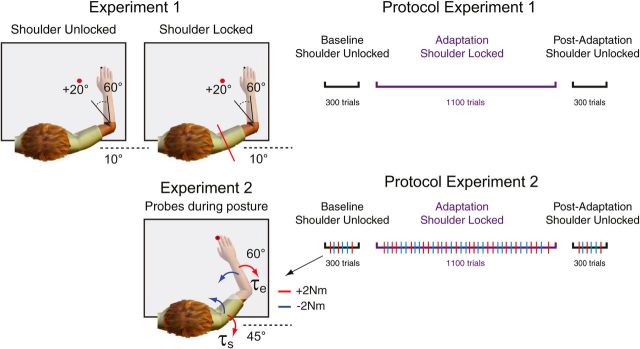Figure 1.
Experimental setup. In Experiments 1 and 2, participants were presented with a peripheral target that could be achieved with 20° of elbow flexion rotation. Participants were instructed to perform fast and accurate reaching movements to this peripheral target and did so with their shoulder joint unlocked and locked (top left column). In Experiment 2, in addition to reaching trials, mechanical perturbations were sometimes applied (probes) to test the sensitivity of feedback responses over the course of learning (bottom left column). Red and blue arrows represent the direction of the multi-joint step-torques applied to the shoulder and elbow joints. Illustrations of the protocols for Experiments 1 and 2 are shown on the right. In Experiments 1 and 2, participants performed 300 baseline trials with the shoulder joint unlocked, 1100 adaptation trials with the shoulder joint locked, and 300 post-adaptation trials with the shoulder joint unlocked. Multi-joint perturbations (probes, red and blue tick marks) were applied in 15% of all trials in Experiments 2.

